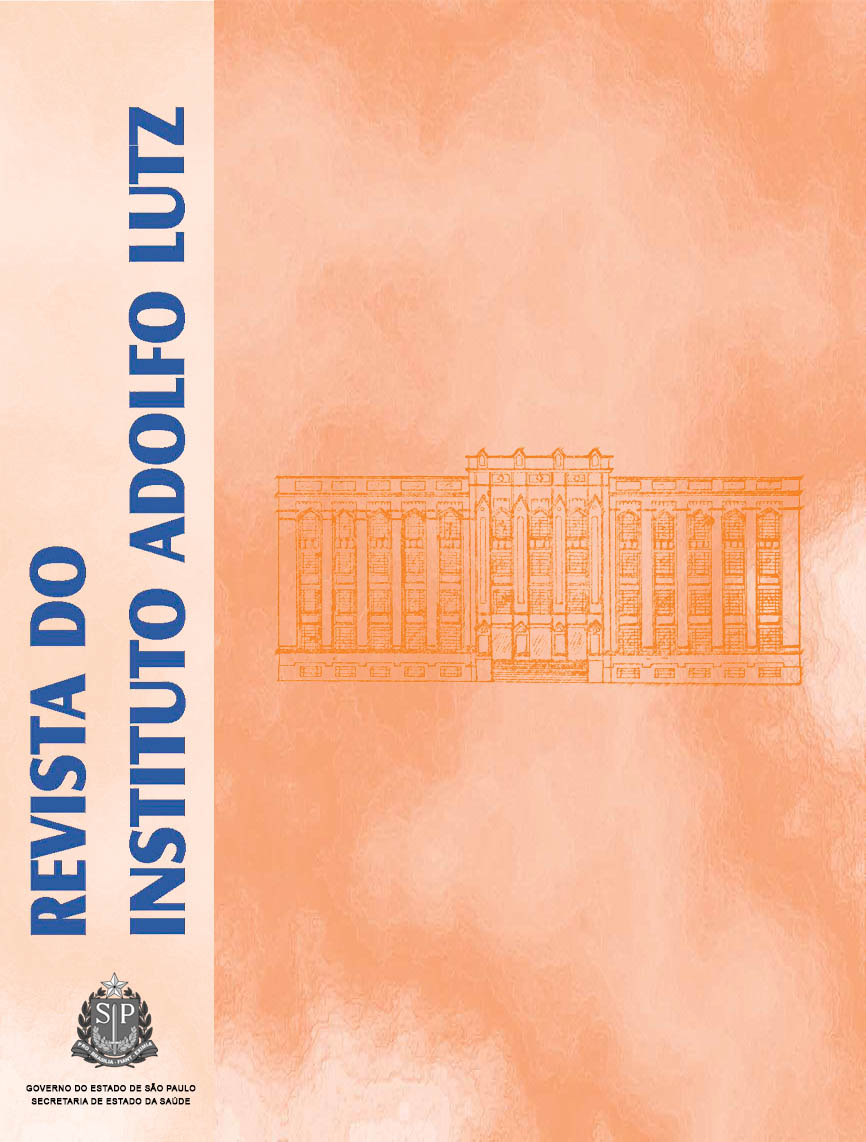Abstract
Among the strategies to combat the tuberculosis, the precocious diagnosis stands out as one of the most important pillars for disease control, because it allows the attention and beginning of the treatment, and as a consequence it minimizes the transmission risks and spreading of disease. With the objective in evaluating the performance of the automated MB/BacTTM system and the conventional method with cultivation in Löwenstein - Jensen (LJ) medium for mycobacteria isolation from pulmonary specimens, clinical samples from patients with presumed symptoms of pulmonary tuberculosis and/or mycobacterioses have been studied. Of 1,317 samples . 327 (24.8%) presented positive culture results on automated MB/BacTTM system , while culture on LJ medium detected 257 (19,5%) positive samples. Sensitivity and specificity of automated system was 98% and 99%, respectively. Comparing both techniques, the automated system presented culture positivity in shorter period of time and a lower contamination rate was observed. These characteristics of automated system allow a fast and effective intervention for treatment, representing benefits for the patients and for the Tuberculosis Control Program.
References
1. Hiijar MA. Epidemiologia da tuberculose no Brasil. Inf Epidemiol SUS1992, 53-7.
2. Raviglione MC, Snider DE, Kochi A. A Global epidemiology oftuberculosis: morbidity and mortality of a worldwide epidemic. JAMA1995; 273:220 – 6.
3. Guevara A, Juárz A, Zenteno R. Tuberculosis y la importância de incorporar nuevas metodologias diagnósticas. MEDUNAB 2003; 6(16): 46-51.
4. Galesi VMN & Santos LAR Tuberculose: A cura em estado de alerta. Rev Prática Hospitalar 2004; 32: 37-4.
5. Ministério da Saúde. Fundação Nacional de Saúde. Centro Nacional de Epidemiologia. Coordenação Nacional de Pneumologia Sanitária. Manual de normas para o controle da tuberculose. Brasília (DF), 1995.
6. Nogueira PA et al. Avaliação das informações de tuberculose (1989-1999) de um Centro de Saúde Escola da cidade de São Paulo. Rev Bras Epidemiol 2001; 4 (2): 131-9.
7. Tenover FC et al. The resurgence of tuberculosis: is your laboratoryready? J Clin Microbiol 1993; 31: 767-70.
8. Ministério da Saúde, Programa Nacional de Combate da Tuberculose. Manual de Bacteriologia da Tuberculose, 2a. ed. Rio de janeiro. Fundação Nacional da Saúde, 1994.
9. Colebunders R; Bastian I. A review of the diagnosis and treatment ofsmear-negative pulmonary tuberculosis. Int J Tuberc Lung Dis 2000;4: 97-107.
10. Jamal L F, Palhares MCA . Tuberculose em pacientes infectados peloHIV experiência de um serviço de referência para DST/AIDS em São Paulo. Bol de Epidem 1999; 7(1): 87-90.
11. Wolinsky E. Convencional diagnostic methods for tuberculosis. ClinInfect Dis 1994; 19: 396-401.
12. Aily DCG. et al. Isolamento de micobactérias em espécimes clínicos utilizando o sistema automatizado MB/BacTTM. Rev Inst Adolfo Lutz2003; 62(3): 233-7.1 3 .
13. Oplustil CP et al. Impacto da automação no diagnóstico de infecções por micobactérias. J Bras Patol Med Lab 2002; 38(3): 167-73.
14. Silva EAM et al. Ocorrência de infecção pulmonar devida ao Mycobacterium kansasii, em São Paulo, Brasil. Rev Inst Adolfo Lutz1987; 47: 11-7.
15. World Health Organization. (Laboratory Services in Tuberculosis Control.) Part III: Culture. Geneve, 1998.
16. Roberts GD et al. Evaluation of Bactec radiometric method for recoveryof mycobacteria and drug susceptibility testing of Mycobacterium tuberculosis from acid-fast smear positive specimens. J Clin Microbiol1983; 18: 689-96.
17. Conville PS , Witebsk FG. Inter-bottle transfer of mycobacteria bythe BACTEC 460. Diagn Microbiol Infect Dis 1989;12:401-5.
18. Alcaide F et al. Evaluation of the BACTEC MGIT 960 and the MB/BacT systems for recovery of mycobacteria from clinical specimensan for species identification by DNA AccuProbe. J Clin Microbiol2000;38(1): 398-401.
19. Rohner P. et al. Evaluation of the MB/BacT system in comparison tothe BACTEC 460 system and solid media for isolation of mycobacteriafrom clinical specimens. J Clin Microbiol 1997; 35(12): 3127-3131.
20. Galesi VMN. Mortalidade por tuberculose no Município de São Paulo, análise de uma década, 1986 a 1995 [Dissertação de Mestrado]. São Paulo: Faculdade de Saúde Pública da USP, 1999.
21. Kent PT , Kubica GP. Public Health Mycobacteriology: a guide for thelevel III laboratory. Atlanta, US Department of Health and HumanServices, 1985.
22. Petroff SA. A new rapid method for the isolation and cultivation oftubercle bacilli directly from sputum and feces. J Exp Med 1915;21:38.
23. Manterola JM et al. Comparison of a non radiometric system with BACTEC 12B and Culture on Egg-based Media for Recovery of Mycobacteria from clinical specimens. Eur J Clin Microbiol InfectDis 1998; 17: 773-7.

This work is licensed under a Creative Commons Attribution 4.0 International License.
Copyright (c) 2005 Instituto Adolfo Lutz Journal
